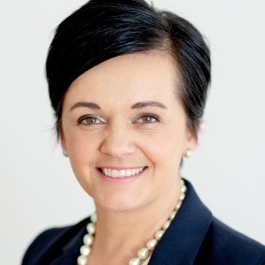How Mercyhealth applied automation to fine-tune revenue cycle management
Adding automation enabled the health system to revamp its staffing approach and track effectiveness in real time.
Electronic health records (EHRs) have evolved significantly over the past decade, to the point that many are receiving accolades for their hospital system and physician practice solutions. Yet they continue to have limited utility to allow for effective management of the healthcare revenue cycle at the task level, including tracking and oversight of employee performance and productivity around specific tasks.
Mercyhealth, a health system based in Rockford, Illinois, is one of a number of health systems that are unbundling revenue cycle operations from their EHRs and managing essential revenue cycle processes instead through automation solutions.a

A pivot to automation
Mercyhealth was prompted by the COVID-19 pandemic to quickly transform its revenue management processes and make the pivot to automation. The organization wanted to send people home to work remotely, but senior leadership also required detailed insights into staff activity and the ability to track effectiveness at home, which an automated process would provide.
The health system’s revenue cycle leaders understood that making such a rapid change would create stress for staff, and that success would therefore depend on taking extra time not only to train staff but also to retrain them post-live.
In replacing its EHR revenue cycle capabilities with an automated solution, Mercyhealth aimed to accomplish two primary objectives: to set appropriate work priorities for staff and to measure the effectiveness of work efforts in real-time.
The organization’s leaders realized that accomplishing these objectives would require an automated solution that had the capabilities needed to move revenue performance from its current focus on measuring productivity (e.g., the quantity of accounts worked) to a focus that includes measuring effectiveness (e.g., the quality of work performed).

To support these efforts, an automated solution requires access to a daily feed of standard files and file formats from the host system. This includes all of the health system’s files related to revenue cycle activities, with updates in real time as patient accounts are created or updated. Mercyhealth assigned management of the daily data feed to the vendor. (See the sidebar below for additional discussion of implementation steps.)
Mercyhealth took two fundamental steps in applying revenue cycle automation to its account collections process, which involved adding prioritization programs and real-time performance measurement.
Implementing algorithms
In January 2020, Mercyhealth had 4,000 revenue cycle worklists and no process in place for enabling staff to sort and filter on accounts they choose to work. As a result, they could not focus first on accounts that would have the greatest revenue impact.
To address this problem, Mercyhealth implemented prioritization algorithms that were designed to automate collections and reengineer the EHR’s legacy workflow. The new algorithms use an exception-based workflow that looks at factors such as dollar amount and claim status to identify for employees those claims most requiring their attention, thereby helping Mercyhealth improve its cash flow. Accounts with a low relative priority can be handled a number of ways, including outsourcing the collection on them and regularly focusing on low-dollar accounts when they are almost out of time to collect.
All accounts are housed in one place and claims are presented to employees, based on their role, one at a time. This automated account prioritization prevents worklists and cherry picking of accounts by staff.
Identifying for employees which claims require their attention eliminates the need for case assignment by managers and supervisors and reduces employees’ responsibility for overall claims management, freeing them up to focus only on the higher-priority claims and driving greater staff efficiency and better cash collection.
Once an employee completes an account, the algorithm determines the next most valuable account ready to be worked and presents it to the end user. Prioritization algorithms ensure that the exact accounts being worked keep the organization’s bottom line in mind. Intelligence within the solution works to ensure staff time is not wasted working claims that are already scheduled to get paid, have an expected payer delay or will have little impact on cash flow.
Exceeding the target
Results were apparent almost immediately. Mercyhealth had the single largest cash collection month in June 2020 — exceeding its target by more than $20 million — and the single largest cash collection day in its history: $11 million.
The health system also continued to enjoy other benefits, such as:
- Reduced its days in accounts receivable (AR) by 55% in one year
- Had three of its strongest consecutive cash collection months in more than two years
- Exceeded its 2021 year-end cash target by more than 2%
Measuring in real time
Often, health systems will take a productivity focus when assessing the performance of their revenue cycle teams, looking at the number of accounts representatives touch per day. While EHRs provide a retrospective view of performance, a real-time approach gives revenue cycle executives visibility into specific staff actions on each account so they can differentiate whether the staff are performing effective actions (i.e., pushing the account toward payment) versus simply processing actions (i.e., messaging a payer without necessary follow-up).
The automated system allows for detailed activity for each employee to be continually tracked, including time spent on each account and gaps of time between actions taken. Based on the work done, the system then determines if the work was effective based on user-defined parameters that help differentiate between work that furthers the account toward resolution and simply treading water.
Information is analyzed and presented to managers and supervisors via dashboards.
This visibility enabled Mercyhealth to:
- Shift training resources
- Have discussions related to efficiency or effectiveness with the staff
- Modify workflows when necessary
- Bring back personnel who were not meeting expectations to the office for training
Two examples of workflow modification based on effectiveness metrics monitoring at Mercyhealth are timely filing and denial management. Several weeks into the project, Mercyhealth decided to adjust the system’s prioritization algorithms to focus on claims in which timing was an issue one day a week, prioritizing high-dollar claims the other four days. Denial workflows were also adjusted to be routed directly to a specialist based on the daily data feeds.
Mercyhealth’s experience with effectiveness metrics has prompted it to explore the use of such metrics in other areas of the revenue cycle, such as billing and patient access.
Championing automation
Shifting mindsets pose a challenge, especially in revenue cycle operations that haven’t changed for decades. Revenue cycle team members need to be convinced that technology can free them up to work on more valuable tasks, without threatening their jobs. For this reason, it is critical to keep them informed of the changes and provide the why behind innovation.
Effectively transforming the revenue cycle requires reengineering revenue processes to drive cash flow and reach new healthcare financial benchmarks.
Automation can enable this transformation, as long as the focus is on people and processes as well as technology.
6 strategies to guide organizations in the transition to revenue cycle automation
1 Dig deeper into analytics. Identify inefficiencies and operational needs. For example, a staff member who is working the next most valuable account as determined by the prioritization algorithm touches more cash than a staff member who randomly chooses which accounts to work. This makes a significant difference in cash flow for the organization.
2 Identify and assess internal issues and obstacles to innovation. Culture is a common challenge for revenue cycle automation. People get uncomfortable when presented with new ways of performing a task, such as no longer using worklists. They also may feel threatened by automation. Remind them that it actually frees them to turn their minds to performing more complex and urgent tasks.
3 Set goals for how much progress is expected within specific time frames. Determine the cost and resources required.
4 Work closely with the team to determine where to make process improvements. Staff should also have real-time feedback on their work. Leaderboards built into the user interface provide immediate feedback, fuel fun competitions across the team and add gamification for younger employees.
5 Reevaluate progress along the way. Are you moving forward or repeating what you did in the past?
6 Conduct research. Read articles in and out of healthcare, talk to others in the field and share the information learned with staff.
Footnote
a. Mercyhealth is a regional health system serving the Rockford area, including parts of southern Wisconsin and the northwest suburbs of Chicago. The health system has annual revenue of about $1 billion across seven hospitals..





